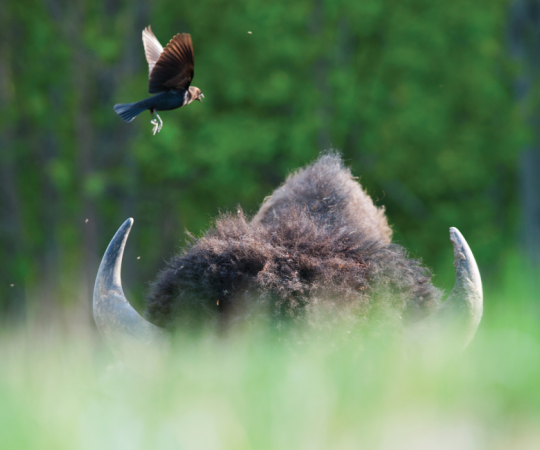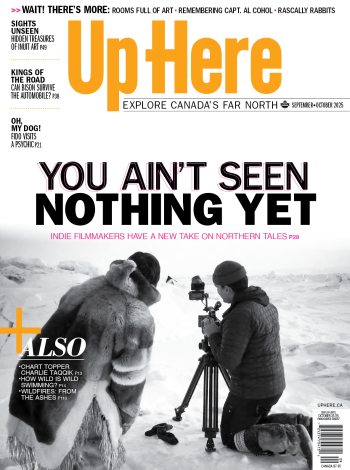Christmas approaches and Santa’s coming with his sled full of toys, pulled by eight… what exactly?
Are they reindeer? In all the kids’ books, Dasher and Dancer and Prancer and Vixen look more like acrobatic white-tailed deer than reindeer. And aren’t reindeer and caribou the same thing?
Where to start? Well, if you look back at the history of these animals, then, yes, it appears Santa’s team consists of reindeer, which have been pulling sleds in Scandinavia and across Siberia for thousands of years.
The first indication of a reindeer’s Christmas duties came in 1823, when Clement Clarke Moore’s poem called “A Visit from St. Nicholas” mentions reindeer pulling the jolly gift-giver’s sled and landing on rooftops. (Moore even named the reindeer.)
The modern likeness to white-tailed deer originates from tales like “Rudolph the Red-Nosed Reindeer,” written in 1939 for Montgomery Ward, a department store chain, by Robert L. May. The story was later developed into song by Johnny Marks and first recorded and released as a record by Gene Autry in 1949. When the wildly popular song was seized by Hollywood and the advertising world, it became a model for the Christmas Eve travels of Santa Claus—and dainty, graceful white-tailed deer leaping through the sky became the inspiration for his reindeer. Since Santa’s sleigh has to fly, artists modelled the animals after deer that easily jump seven-foot fences and wander through farmland, suburbs, and cities.
But make no mistake: white-tailed deer are not Arctic animals and they would not do well in any tundra situation. That explains the look of Santa’s reindeer—but is it reindeer or caribou that lead his sleigh?
Well, reindeer and caribou (as they’re called in North America) are all one species, Rangifer tarandus, which means “the wanderer.” There are some 14 sub-species, each occupying a specific geographical area and with minor differences. To keep it simple, we’ll just look at two main groups: reindeer and caribou.
Essentially, reindeer are native to Arctic Europe and Eurasia, and caribou are the equivalent in North America. Reindeer have been domesticated and used by Arctic people like the Sámi, Nenets, and a host of other groups across the Eurasian Arctic, for centuries. There are wild reindeer living in herds in that part of the world, but we are most familiar with the ones that are herded, somewhat tamed, and that are part of the Eurasian cultures. They do pull sleds, but also give milk and meat, and their skins are used for fur clothing and leather. These reindeer are companions, helpers, and a source of food and clothing to the people. Caribou, on the other hand, are wild. Although they are an important source of food and clothing to Northern peoples, they are not domesticated.
If you met them on the tundra, could you tell the difference between reindeer and caribou? Well, yes and no. At a distance, probably not. They are quite similar in shape, less so in behaviour.
Although bull barren ground caribou are large, taller, and somewhat heavier than bull reindeer, the latter are stouter in shape, and built lower to the ground.
Reindeer have shorter legs and wider feet, and they’ve adjusted their speed to the fact that they travel with people. Since caribou migrate long distances and choose their own routes, without humans or dogs to protect them from predators, they tend to have longer legs.
The feet of reindeer are generally wider and larger than those of caribou, though you might need to see them side by side to tell the difference.
Domesticated reindeer are less migratory than caribou, travelling from boreal forest areas where they winter to summer grazing grounds along the Arctic coasts of Norway, Sweden, Finland, and Russia. Some of these migrations are weeks-long and others are short, but the animals are protected by people. The reindeer are owned by different families, and marked by ear-notches. Often, older females wear bells as they are the leaders in the migration. The herders pretty much follow the reindeer, though they may do some guiding now to avoid industrial developments and to get the animals to designated summer pastures.
Reindeer are often trained to wear harnesses and pull sleds. Some are even taught to race much as sled dogs are—though teams usually consist of just one or two animals. During the spring and early-winter migrations, they are hitched to a sled in singles or spans and then to a sled train led by a herder. Most caribou-herding people walk or drive snowmobiles, but smaller children ride on the sleds. There’s no cavorting over or around the moon nor landing on rooftops—it’s pretty much a slog through the softening spring snow or thin autumn snow. Still, the migrations are major tourist attractions.
Both male and female reindeer and caribou have antlers. In no other deer species do both sexes have antlers. Unlike horns, antlers are bone, growing in a single year, and are shed each year. Cow reindeer have larger antlers than female caribou of the same age and weight. Females use their antlers to defend feeding craters in the snow for themselves and their calves, and reindeer have been observed using the front shovels on their antlers to help clear feeding spots in deeper snow. Caribou do this as well, but mostly live in areas where the snow is not as deep, so it’s not as beneficial for females to have larger antlers.
Both caribou and reindeer have similar coats, composed of two layers. The undercoat is made up of thin, wavy hairs. The outer guard hairs have long air cells, excellent insulation, and help the animal float higher when swimming. Both species grow their winter coat in September and shed in early summer, moulting to dark brown. Reindeer often are entirely white or show a lot of white in their coats—extra white markings are a common result of domestication. Caribou have white around their neck and shoulders, and some on their belly and butt, but no white patches, stockings, or blazes on their faces.
And there are reindeer in North America, following a number of importations into Alaska and the North American Arctic starting in the late 1800s. One epic, five-year journey by Sámi herders brought a herd of reindeer from western Alaska to the Mackenzie Delta in the late 1930s. That herd is still in the Delta, now owned by the Inuvialuit Regional Corporation. They are still herded (by skidoos now) and their migration can be seen on guided tours. Reindeer have been at times introduced into areas where local caribou herds failed, such as on the Belcher Islands.
But most Rangifer tarandus in North America are wild caribou, migrating long distances over challenging terrain.
Yet caribou (and Eurasian populations of reindeer) are in trouble. Populations fluctuate drastically over time, giving their grazing range time to recover. For thousands of years, this worked for them. But now, external changes are hitting fast, and the caribou may not be able to keep up. Climate change is the biggie—shrub tundra is replacing heath and lichen tundra and there are more bugs harassing them, as well as competition from other grazers like moose, and increases in predators. Industrial development and overhunting also come into play. Each problem takes a toll.
This is bad news indeed to the Indigenous peoples on both continents that depend on caribou and reindeer, and much research is under way to try to reverse this trend. It’s unknown as to whether it will work. In the meantime, there are strict restrictions on caribou hunting in Canada and major attempts being made to protect the herds.
Now, getting back to the question of who pulls Santa’s sleigh.
It’s quite simple, really. The legend of Saint Nicholas originated in Europe and long preceded Santa Claus. This helpful guy, so beloved of children, rode a sled pulled by reindeer. Though our North American caribou look very much the same, they are not domesticated—they are still quite wild and go their own way.
Caribou have no obligations on Christmas Eve. And no red noses, either.









